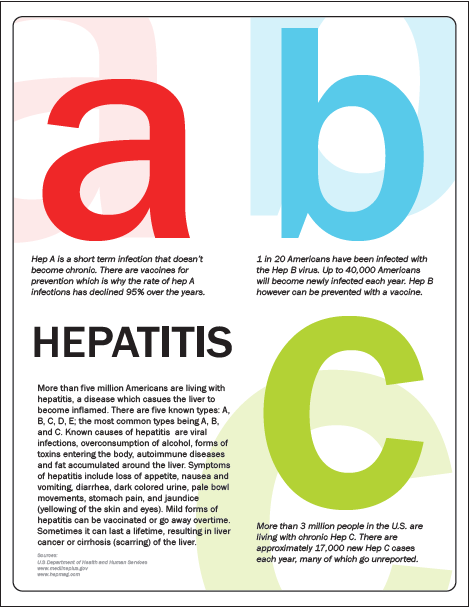By Shahneel Ahmed Hepatitis is an inflammation of the liver. The liver is the largest internal organ in the human body and serves many metabolic functions. The liver converts nutrients in our diet into substances our body can use and stores these substances. Furthermore, the liver takes toxic substa...
Hepatitis is an inflammation of the liver. The liver is the largest internal organ in the human body and serves many metabolic functions. The liver converts nutrients in our diet into substances our body can use and stores these substances. Furthermore, the liver takes toxic substances and converts them into harmless substances or ensures that they are released from the body.
Hepatitis can be self-limiting or progress to scarring, cirrhosis, or liver cancer. The most common cause of hepatitis is viruses. There are five hepatitis viruses – type A, B, C, D, and E. The type of hepatitis is named after the virus that causes it – hepatitis A, hepatitis B, etc. Drug and/or alcohol use can also cause hepatitis. Hepatitis A is transmitted from person to person through the fecal-oral route. Consumption of contaminated food or water is the most common cause. Hepatitis A is a self-limiting type of hepatitis that does not lead to chronic infection. Common symptoms are fatigue, low appetite, stomach pain, nausea, and jaundice (yellowing of the skin and/or eyes). Such symptoms usually resolve within two months after infection. The antibodies produced by the body in response to infection by the hepatitis A virus last indefinitely and protect the body for reinfection. Hepatitis A can be prevented with vaccination.
Hepatitis B is transmitted from person to person through blood, semen, or another bodily fluid. Sexual contact, sharing needles and/or syringes, and mother to baby during birth are some common causes. Hepatitis B may only lead to an acute infection in some cases, but in other cases, it can become a chronic infection. Chronic hepatitis B can lead to cirrhosis or liver cancer. Hepatitis B can also be prevented with vaccination.
The hepatitis C virus is a blood-borne virus. Most people become infected with hepatitis C by sharing needles and/or syringes to inject drugs. In some cases, hepatitis C only leads to an acute infection. In most cases; however, it leads to a chronic infection. Many of those who are infected may not be aware of the infection because they do not have clinical symptoms. Unlike hepatitis A and B, there is no vaccine for hepatitis C. Hepatitis C can be prevented by avoiding behaviors that may involve the transfer of contaminated blood, such as sharing needles and syringes.
Hepatitis D only occurs in people infected with hepatitis B. This is because the hepatitis D virus is incomplete on its own and needs the hepatitis B virus to replicate. Hepatitis D can cause either an acute or a chronic infection and is transmitted from person to person through percutaneous or mucosal contact with infected blood. There is no specific vaccine for hepatitis D; however, hepatitis D can be prevented in those who are not infected with hepatitis B with the hepatitis B vaccine. Hepatitis D and E are uncommon in the United States.
Hepatitis E; however, is common in many other parts of the world. Hepatitis E does not cause chronic infection and is transmitted from person to person through the fecal-oral route. Contaminated water and poor sanitation are common causes. There is no vaccine for hepatitis E.

